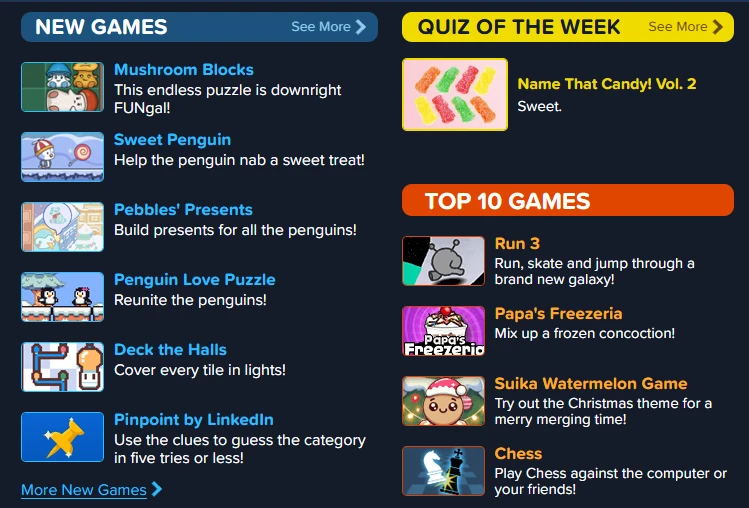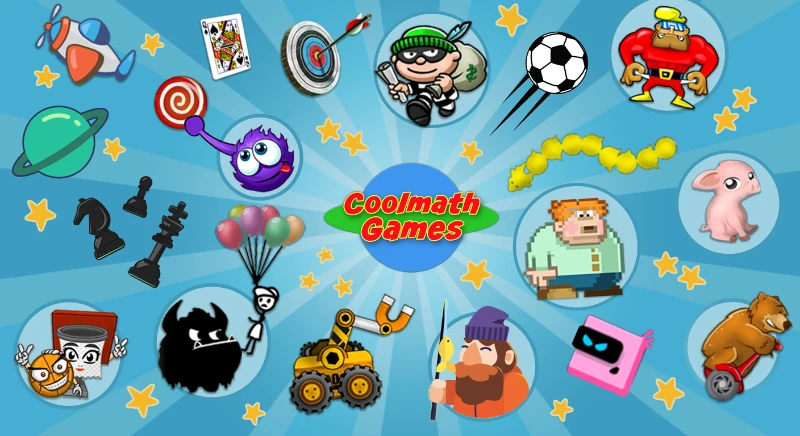Cool Math Games started with a simple but ambitious goal: to make math enjoyable for kids. Back in 1997, its primary focus was to offer math-centric games that could help students practice arithmetic, algebra, and other mathematical concepts in a fun way. The platform was designed to make learning math feel less like a chore and more like an adventure.
The name “Cool Math Games” is undeniably catchy, but it can also be misleading. At first glance, it promises a world of math-based fun, but upon entering the site, you’ll find a variety of games that have little to do with traditional math. The name may have been chosen strategically to attract a younger audience and educators, but the content has evolved significantly since its inception.

From Education to Entertainment
Over time, the platform shifted its focus from purely educational content to a broader range of entertaining games. This evolution was likely driven by a desire to appeal to a wider audience, including children who might not be enthusiastic about traditional learning. While math games remain a part of the site’s offerings, they are now outnumbered by logic puzzles, strategy games, and casual fun.
Even though many of the games on Cool Math Games are not explicitly math-based, they often incorporate mathematical thinking in subtle ways. Strategy games require planning and logical reasoning, while puzzle games might involve pattern recognition or spatial awareness. These elements engage the brain in ways similar to solving math problems, making the “math” in Cool Math Games more about cognitive skills than direct calculations.
What Are the Most Popular Games?
The platform’s most popular games tend to be those that challenge players’ problem-solving abilities or provide a relaxing escape.
- Snake: A classic arcade game where players navigate a growing snake while avoiding collisions with walls or itself.
- Run 3: A fast-paced platformer set in space, requiring quick reflexes and careful planning.
- Moto X3M: A thrilling bike racing game filled with stunts, obstacles, and challenging levels.
- Slice Master: A satisfying physics-based game where players slice objects with precision to complete levels.
- Fireboy and Watergirl in the Forest Temple: A cooperative puzzle game where players control two characters to solve intricate challenges.
- Tiny Fishing: A relaxing game where players cast their line and try to catch as many fish as possible.
These games highlight the shift from educational tools to engaging entertainment that still exercises the mind.
Does Entertainment Outshine Education?
While the site’s current focus leans heavily toward entertainment, it’s worth asking whether this shift has diminished its educational value. Critics might argue that the lack of math-specific content undermines its original purpose. However, supporters would say that the cognitive skills developed through these games are just as valuable as traditional math practice.
Despite the limited presence of direct math games, Cool Math Games remains a tool for enhancing critical thinking. Its diverse library encourages players to strategize, solve puzzles, and improve hand-eye coordination. These skills are foundational for learning and can indirectly support math proficiency.
Conclusion
Cool Math Games’ evolution raises several thought-provoking questions: Does indirect learning through entertainment provide the same benefits as direct education? Is the site’s current direction a missed opportunity to make math more engaging, or is it a brilliant adaptation to the interests of its audience? Perhaps the real strength of Cool Math Games lies in its ability to make learning feel incidental, hidden within a world of fun.



Comments (0)
Sign in to comment
Report